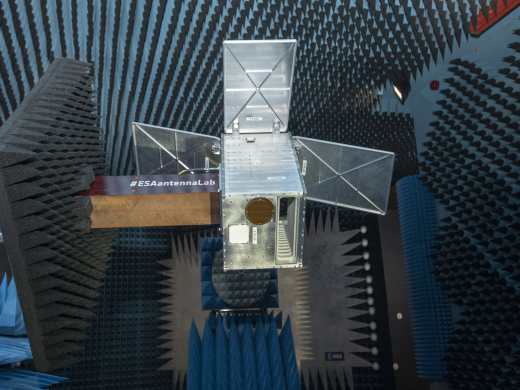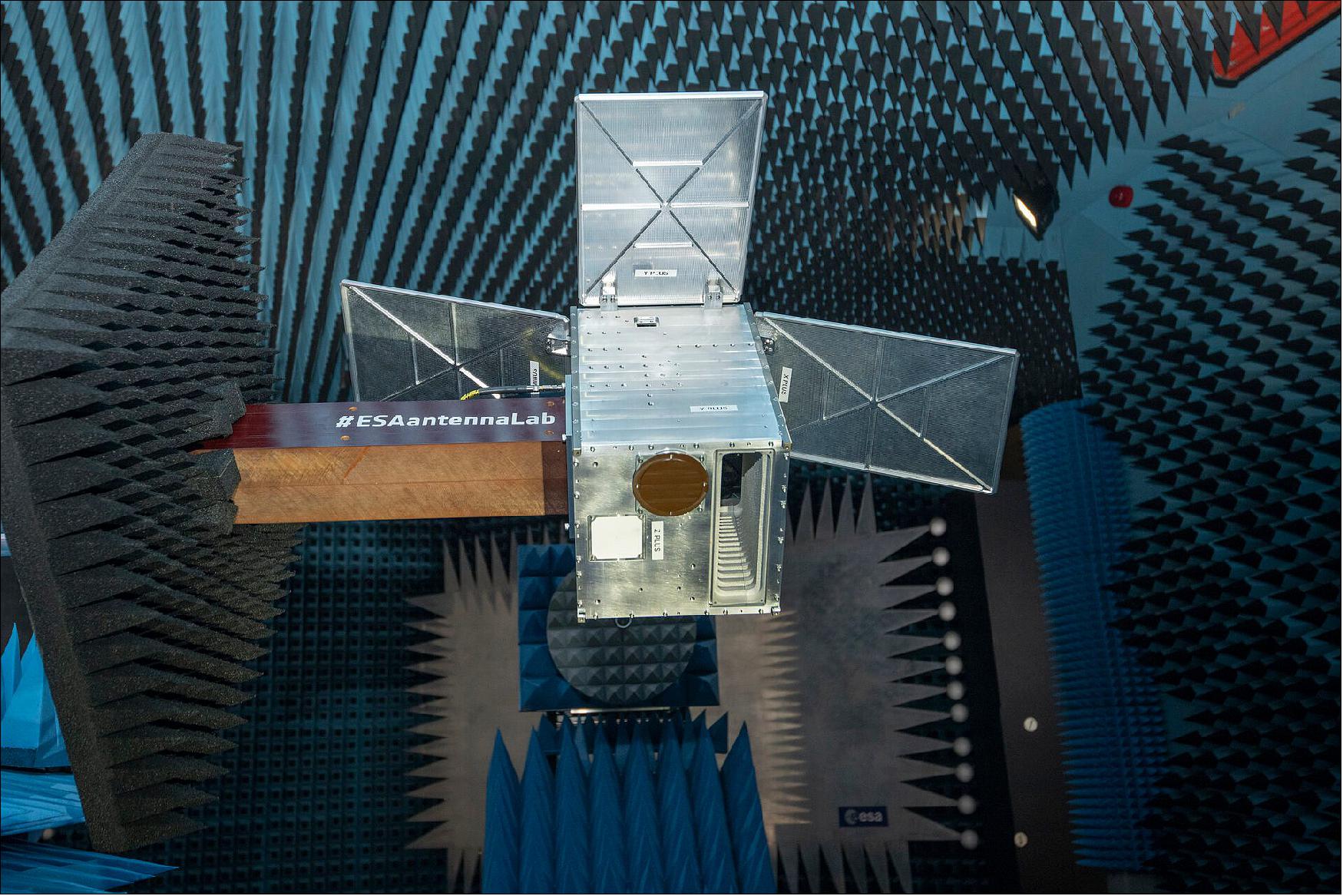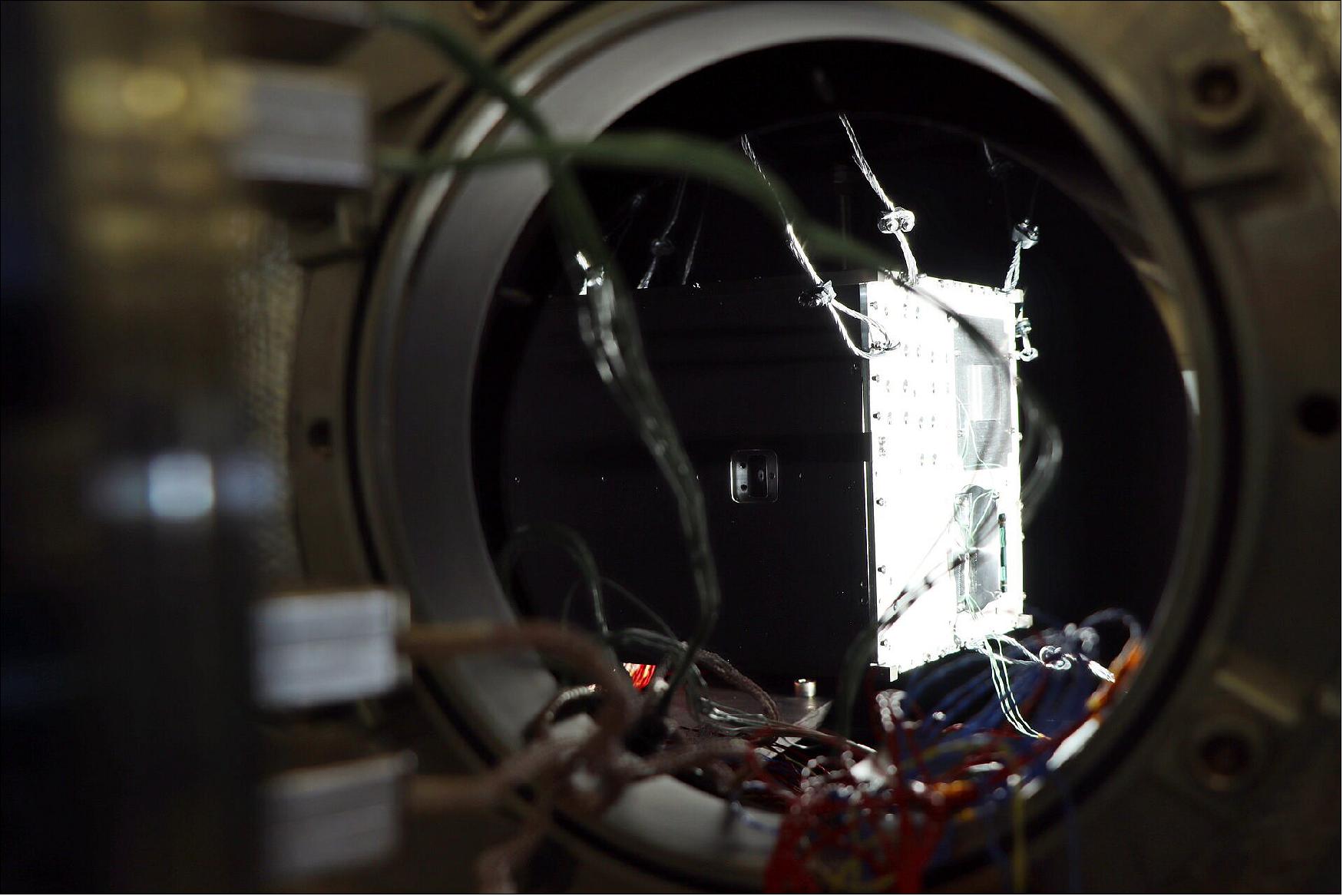PROBA-V plus one
EO
ESA
PROBA-V plus one, later renamed Proba-V Companion CubeSat (PV-CC), used to monitor global vegetation growth, is the newest satellite of ESA's PROBA series.
Quick facts
Overview
| Mission type | EO |
| Agency | ESA |

Summary
Mission Capabilities
PV-CC will host on board, a telescope version of the Vegetation Imager which was used during the development of its predecessor PROBA-V. The addition of this satellite to the existing PROBA-V will complement and expand its observations in the visible to a thermal domain and will facilitate land surface temperature and water stress research.
Performance Specifications
The objective of the PV-CC mission is to reach a spatial resolution of less than 100 m, however, the target has been set at 80 m. Its swath is between 80 - 100 km, the ground sampling distance is less than 100 and a foreseen orbit at 520-550 km altitude. PROBA-V Companion has a geometric accuracy of 1 GSD (geometric standard deviation) absolute and has spectral bands within 9.5 µm – 12.5 µm.
Space and Hardware Components
PV-CC is composed of twelve 10 cm standardised units, with off-the-shelf structural and thermal model antennas, which allow the satellite to be assembled in an affordable manner.
The satellite carries a directional high-data rate antenna, needed to downlink large amounts of imagery to users. It also carries an omnidirectional antenna, which allows the reception and transmission of lower-data-rate signals in any direction. This enables the control of the mission.
In addition, some of the instruments of the original PROBA-V, which remain fully operational, will also be used during the PV-CC mission:
- the EPT (Energetic Particle Telescope) which provides near real-time and static radiation data products for ESA’s Space Weather Service Network,
- ADS-B (Automatic Dependent Surveillance-Broadcast),
- SATRAM (Space Application of Timepix-based Radiation Monitor),
- HERMOD (High-Density Space Form Connector Demonstration),
The instruments are healthy and in continuous operations and they will also be used, during the mission.
Aerospacelab has booked the launch of PV-CC with Arianespace flight Vega-C, with a current launch window from 1 December 2022 to 31 January 2023.
PROBA-V plus one
In February 2021, European Space Agency is in the process of developing the ”PROBA-V plus one” satellite, a 12U CubeSat – a small low-cost satellite mission, built up from standardized 10-cm CubeSats. It will fly a cut-down version of the vegetation-monitoring instrument aboard the Earth-observing satellite PROBA-V to perform experimental combined observations with its predecessor. 1)

A pair of antennas for the CubeSat, mounted in this ‘structural and thermal model’ underwent testing at ESA’s Compact Antenna Test Range at the ESTEC technical centre in the Netherlands.
“The white patch in Figure 1 is a directional high-data rate antenna, needed to downlink large amounts of imagery to users,” explains Xavier Collaud of Aerospacelab in Belgium, developing the mission for ESA.
“Then the brown patch is an omnidirectional antenna, that – combined with a similar antenna on the other side – allows the reception and transmission of lower-data rate signals in any direction, enabling the control of the mission.
“These antennas are commercial off-the-shelf equipment, allowing the building up of small satellites in an affordable, modular manner. They are supplied by Syrlinks, in partnership with ANYWAVES, both in France.
“Testing the antennas in the fully controlled environment of ESA’s CATR (Compact Antenna Test Range) gives us the sensitivity we need for top-quality results. We’ve been testing with the antennas mounted within this satellite model because its structure influences the antenna radiation – so for instance we’ve been measuring the signal patterns and strength with the solar panels stowed as well as deployed, to make sure we can communicate with the CubeSat in that configuration.”
Launched in 2013, PROBA-V was an innovative ‘gap filler’ mission between the Vegetation instruments monitoring global plant growth aboard the full-size Spot-4 and -5 satellites and compatible imagery coming from Copernicus Sentinel-3, the first of which flew in 2016.
By combining the views from three adjacent telescopes into one, PROBA-V’s Vegetation achieved a continent-spanning swath of 2250 km, allowing to image the entire world’s plant growth in just over a day. But with its operational mission now over, PROBA-V has shifted to experimental mode.
As part of that effort, the PROBA-V Companion CubeSat will host a single telescope version of the Vegetation imager, left over from PROBA-V development. The two missions will perform joint observations, to evaluate how well the instrument performs on a smaller, lower-cost platform.
Aerospacelab will also gain operational experience to be applied to its planned constellation of geospatial-information-gathering small satellites.
“The antenna test campaign took about two weeks,” adds ESA antenna engineer Eric Van Der Houwen. “We obtained spherical near-field patterns of the antennas, both individually and in combination, to measure how much they radiate and in which directions, having begun with a reference antenna in order to determine our setup was optimal.”
Based on the antenna test results, as well as mechanical testing performed with another CubeSat model, the PROBA-V Companion CubeSat mission has now entered its detailed qualification and production ‘Phase D’, on track for launch this year. The mission is supported through the Fly in-orbit testing element of ESA’s General Support Technology Program.
Development Status
• May 19, 2021: A test version of ESA’s PROBA-V Companion CubeSat seen during preparation for ‘thermal balance’ testing in the Agency’s Mechanical Systems Laboratory at its ESTEC technical centre in the Netherlands. 2)
- Space is a place where it is possible to be hot and cold at the same time if one part of your satellite is in sunlight and another face in shade. A satellite’s interior needs to maintain a steady temperature to go on operating properly.

- Developed by prime contractor Aerospacelab in Belgium for ESA, this mission is a 12U ‘CubeSat’ – a small, low-cost satellite built up from standardized 10-cm boxes. It will fly a cut-down version of the vegetation-monitoring instrument aboard the Earth-observing PROBA-V to perform experimental combined observations with its predecessor.
- By combining the views from three adjacent telescopes into one, PROBA-V’s Vegetation achieved a continent-spanning swath of 2250 km, allowing to image the entire world’s plant growth in just over a day. But with its operational mission now over, PROBA-V has shifted to experimental mode.
- As part of that effort, the PROBA-V Companion CubeSat will host a single telescope version of the Vegetation imager, left over from PROBA-V development. The two missions will perform joint observations, to evaluate how well the instrument performs on a smaller, lower-cost platform.
- Aerospacelab will also gain operational experience to be applied to its planned constellation of geospatial-information-gathering small satellites.
- The flight version of the nanosatellite will undergo its own thermal balance testing at ESTEC later this year, while its instrument is due to be calibrated in the establishment’s Opto-Electronics Laboratory and its platform will be de-magnetized using ESTEC’s Magnetic Coil Facility. The PROBA-V Companion CubeSat’s antenna underwent radio-frequency testing in January.
- The mission is supported through the Fly in-orbit testing element of ESA’s General Support Technology Program.
Launch
A launch of the PROBA-V plus one mission is planned for the end of 2021.
References
1) ”Proba-V’s plus one,” ESA Agency, 10 February 2021, URL: https://www.esa.int/ESA_Multimedia/Images/2021/02/Proba-V_s_plus_one
2) ”Cool test of Proba-V companion,” ESA Enabling & Support, 19 May 2021, URL: https://www.esa.int/ESA_Multimedia/Images/2021/05/Cool_test_of_Proba-V_companion
The information compiled and edited in this article was provided by Herbert J. Kramer from his documentation of: ”Observation of the Earth and Its Environment: Survey of Missions and Sensors” (Springer Verlag) as well as many other sources after the publication of the 4th edition in 2002. - Comments and corrections to this article are always welcome for further updates (eoportal@symbios.space).